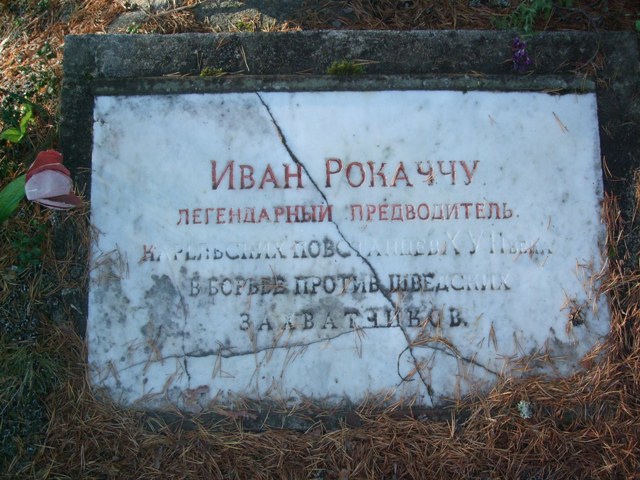The grave of Iivana Rokatshu
The grave of Iivana Rokatshu, the commander of the Forest Guerrillas in the White Sea Karelia, is located in the old Karelian village of Tiksha. He is considered a national hero of Karelia because he stopped the Swedish invasion during the Long Wrath1, although he himself fell in battle. In 1894, Finnish ethnographer Yrjö Blomstedt took the first photograph of the Rokatshu burial mound and published its first description: “In the sternly beautiful graveyard of Tiksha Village, one of the oldest graveyard in Russian Karelia, rests in his grave the mighty liberator of Karelia, famed during the times of the Long Wrath, the hero Rokatshu, celebrated in legends. Under the extensive and high barrow, he has lain here, as the people say, for hundreds of years. The surrounding Karelians treat their monument with special care and love, hanging sacrificial or memorial cloths on the dried branches of pines as a sign of longing and sorrow, thereby expressing respect for the bright and noble memory of their liberator hero, just as they respect their closest relatives by hanging these memorial cloths on their grave posts. The entire barrow is encircled by a simple, now partially rotted and moss-covered log fence, consisting of nine logs, which, as they say, are replaced with new ones from time to time.”2 In 1950, Karelian archaeologist Alexander Linevsky excavated the burial mound. The bust of the national hero was created based on the skull of Iivan Rokachchu. 1. The Russo-Swedish War of 1570–1595, during which the Karelians raided the Oulu and Kajaani regions, where they looted and burned Finnish settlements, in response to which the Finns launched no less bloody retaliatory strikes on Russian Karelia. 2. Translated by Margarita Matthew, 2024. |